| | #1891 |
| BHPian Join Date: May 2009 Location: NYC / Lucknow
Posts: 702
Thanked: 4,126 Times
| |
| |  (4)
Thanks (4)
Thanks
|
| |
| | #1892 |
| Senior - BHPian | |
| |
| | #1893 |
| BHPian Join Date: May 2009 Location: NYC / Lucknow
Posts: 702
Thanked: 4,126 Times
| |
| |  (2)
Thanks (2)
Thanks
|
| | #1894 |
| Senior - BHPian | |
| |  (3)
Thanks (3)
Thanks
|
| | #1895 |
| BHPian Join Date: May 2009 Location: NYC / Lucknow
Posts: 702
Thanked: 4,126 Times
| |
| |  (3)
Thanks (3)
Thanks
|
| | #1896 |
| Distinguished - BHPian  | |
| |  (1)
Thanks (1)
Thanks
|
| | #1897 |
| BHPian Join Date: May 2009 Location: NYC / Lucknow
Posts: 702
Thanked: 4,126 Times
| |
| |  (2)
Thanks (2)
Thanks
|
| | #1898 |
| Distinguished - BHPian  Join Date: Aug 2014 Location: Delhi-NCR
Posts: 4,325
Thanked: 72,162 Times
| |
| |  (1)
Thanks (1)
Thanks
|
| | #1899 |
| BHPian Join Date: May 2009 Location: NYC / Lucknow
Posts: 702
Thanked: 4,126 Times
| |
| |  (2)
Thanks (2)
Thanks
|
| | #1900 |
| Senior - BHPian | |
| |  (6)
Thanks (6)
Thanks
|
| | #1901 |
| Senior - BHPian | |
| |  (5)
Thanks (5)
Thanks
|
| |
| | #1902 |
| Senior - BHPian | |
| |  (6)
Thanks (6)
Thanks
|
| | #1903 |
| Distinguished - BHPian  Join Date: Aug 2014 Location: Delhi-NCR
Posts: 4,325
Thanked: 72,162 Times
| |
| |  (1)
Thanks (1)
Thanks
|
| | #1904 |
| Senior - BHPian | |
| |  (4)
Thanks (4)
Thanks
|
| | #1905 |
| Distinguished - BHPian  Join Date: Aug 2014 Location: Delhi-NCR
Posts: 4,325
Thanked: 72,162 Times
| |
| |  (3)
Thanks (3)
Thanks
|
 |
Most Viewed




 Maybe get a custom 1:72 Aircraft carrier deck as a base for a diorama.
Maybe get a custom 1:72 Aircraft carrier deck as a base for a diorama.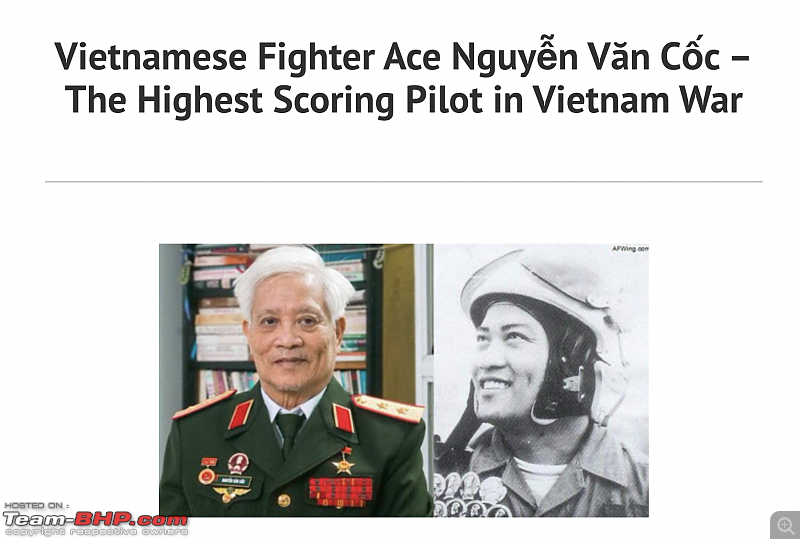
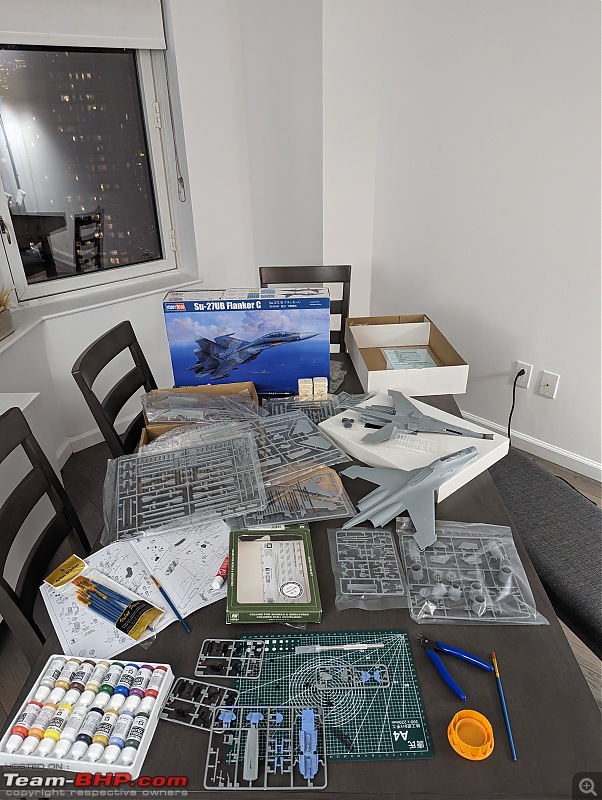
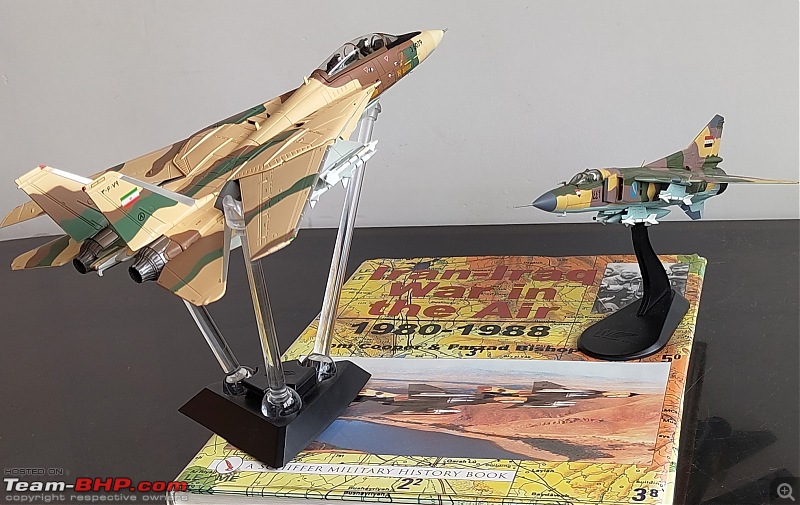
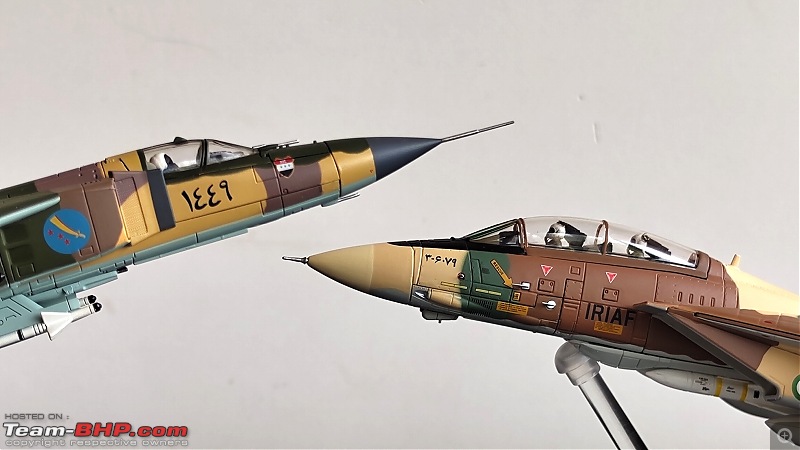
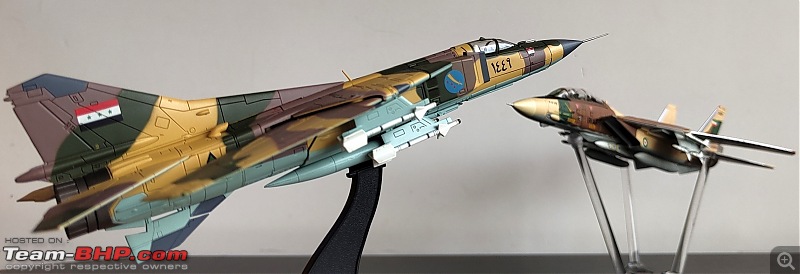

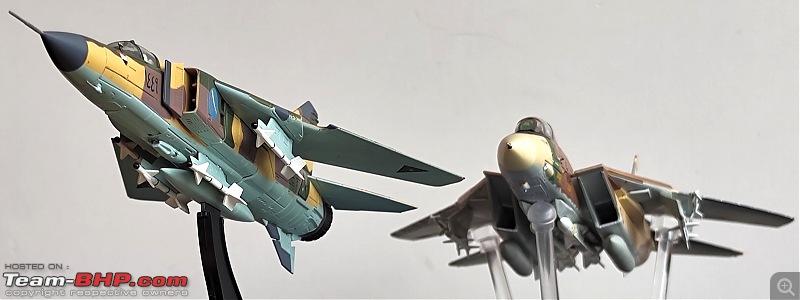

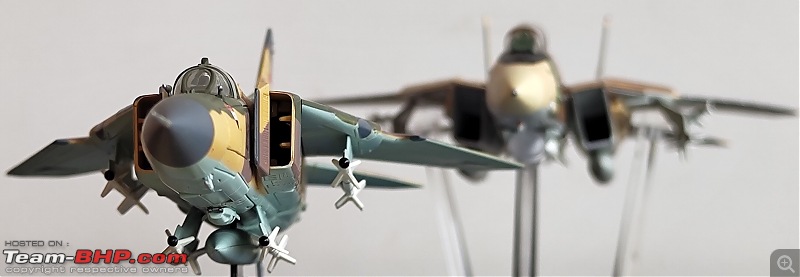

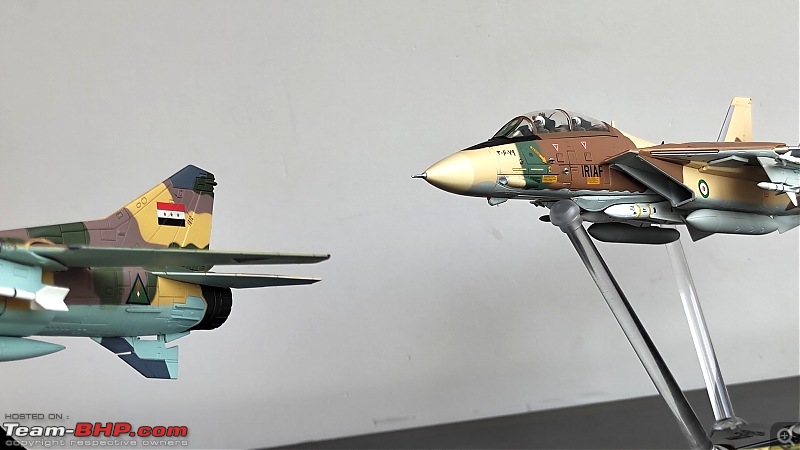


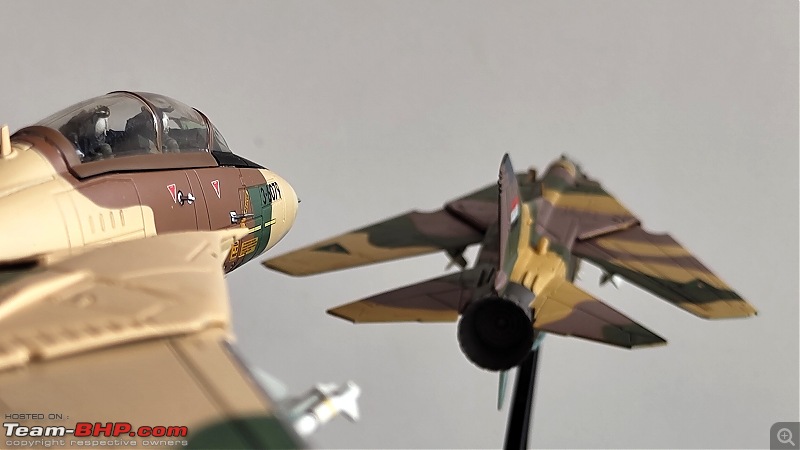
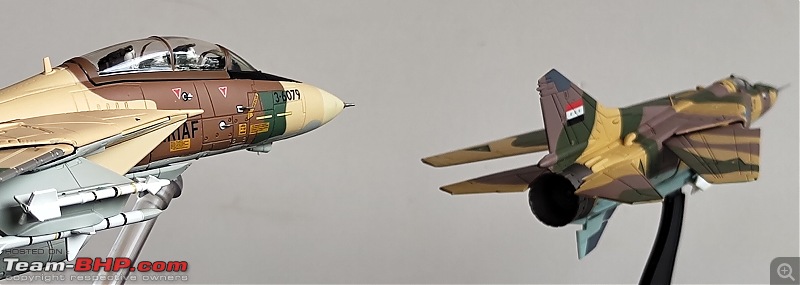

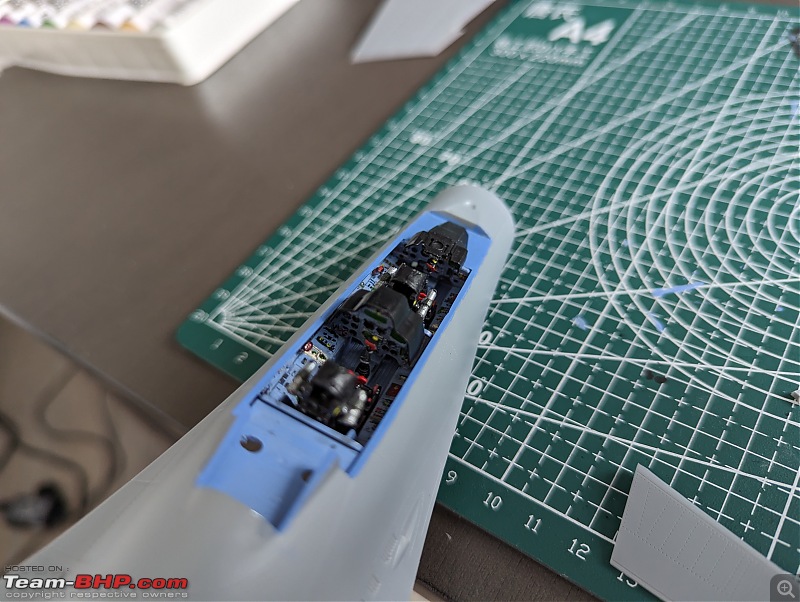
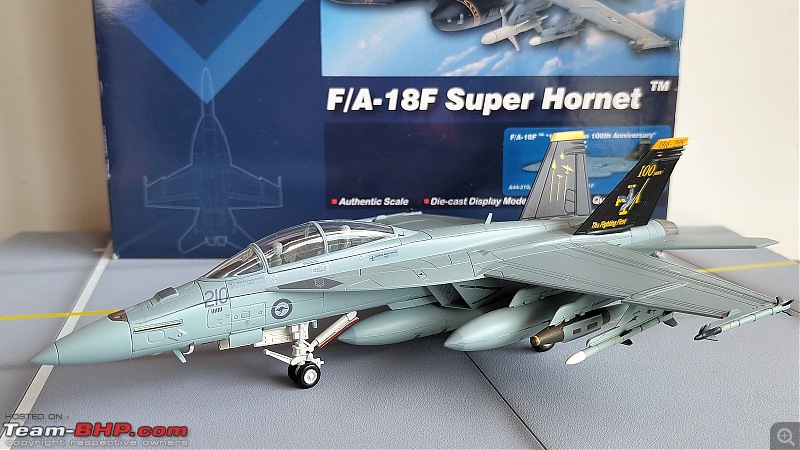
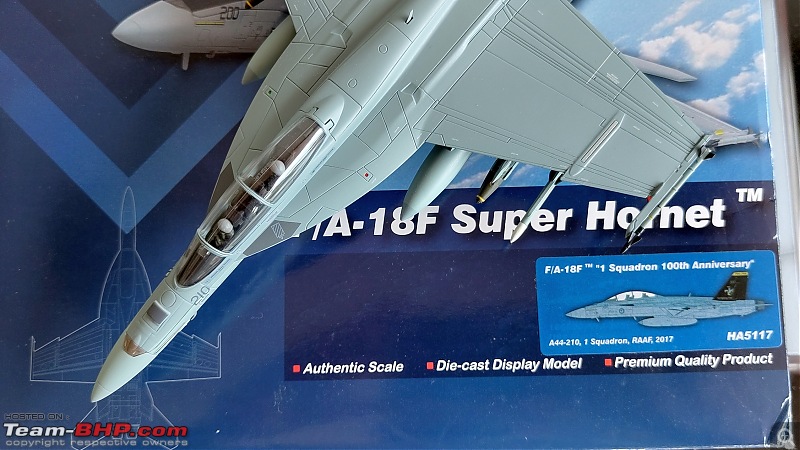
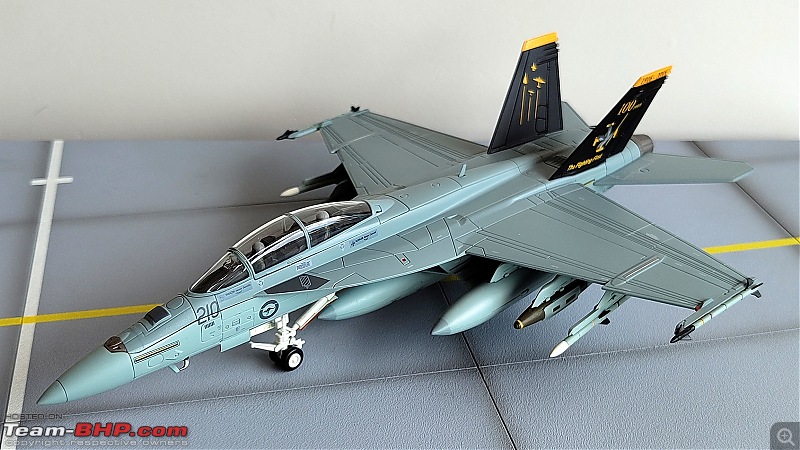

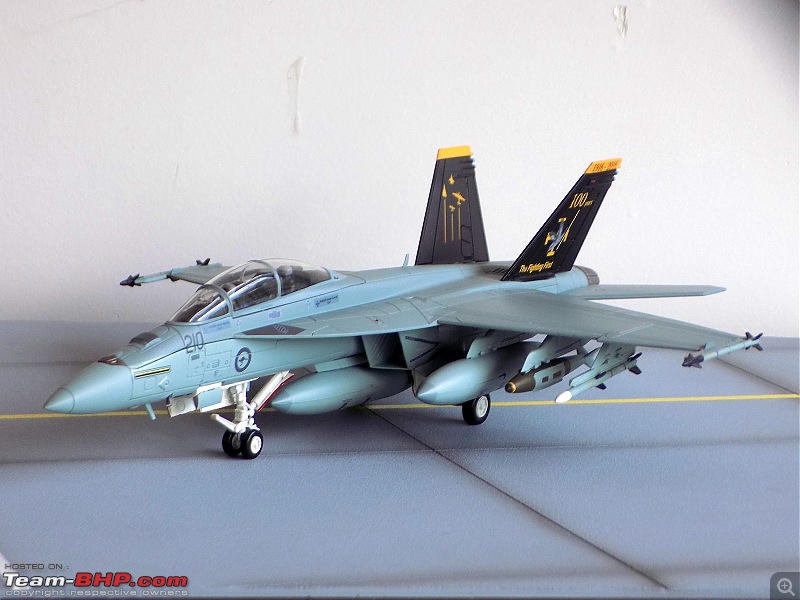
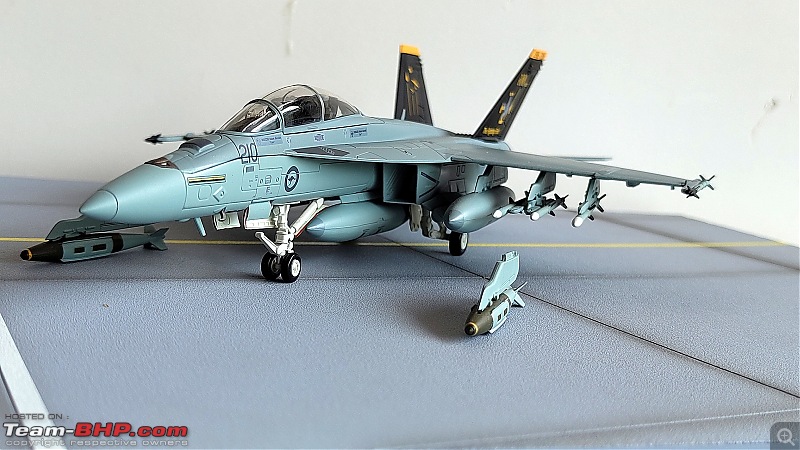
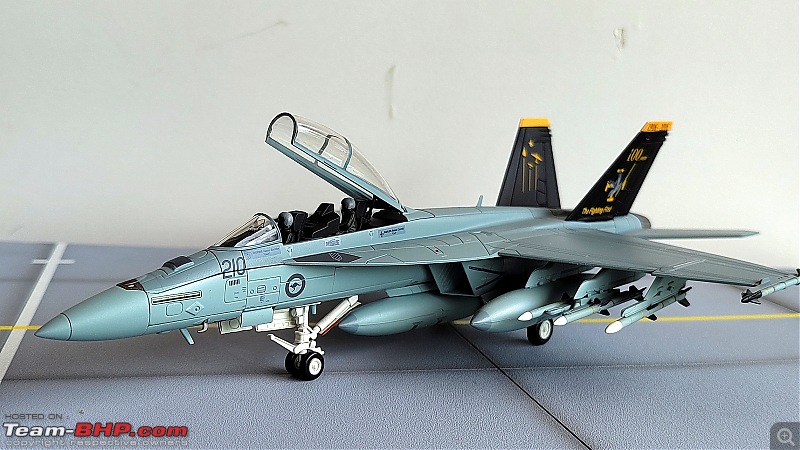
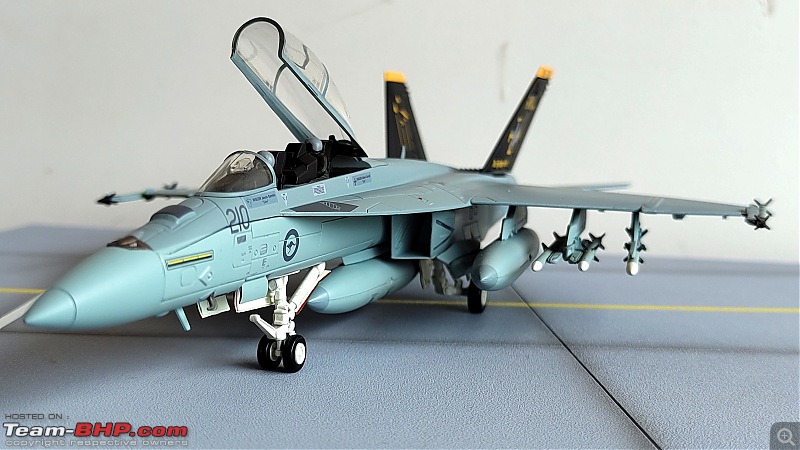
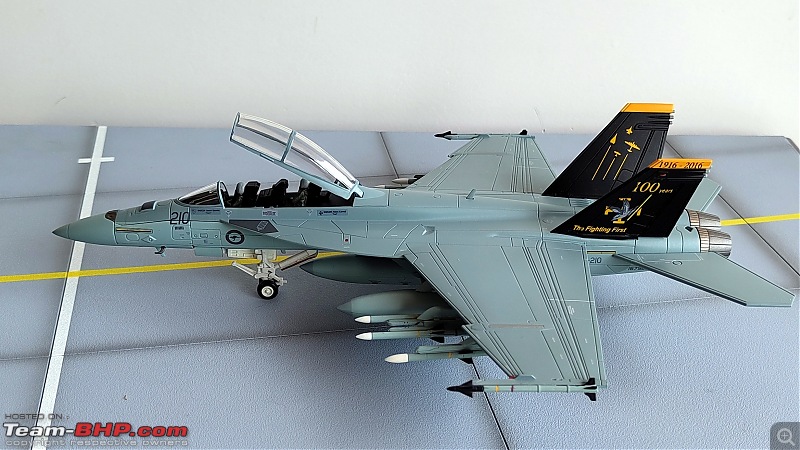

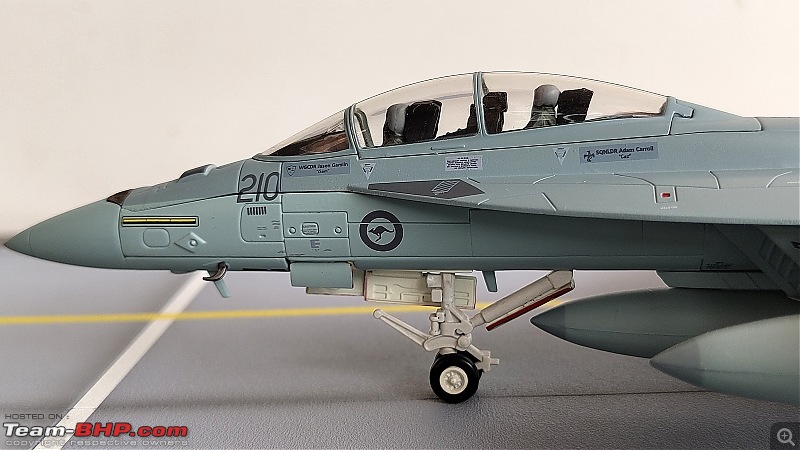

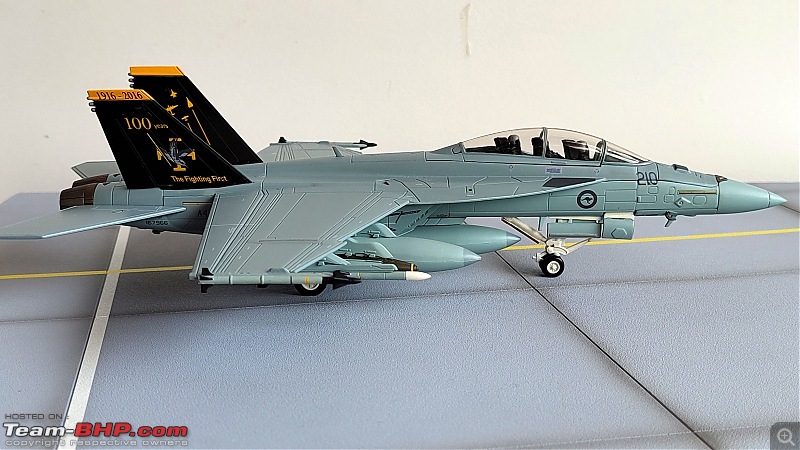
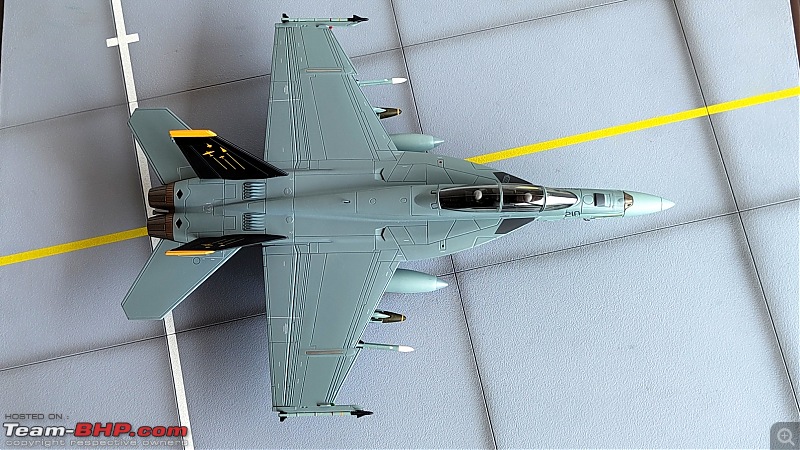
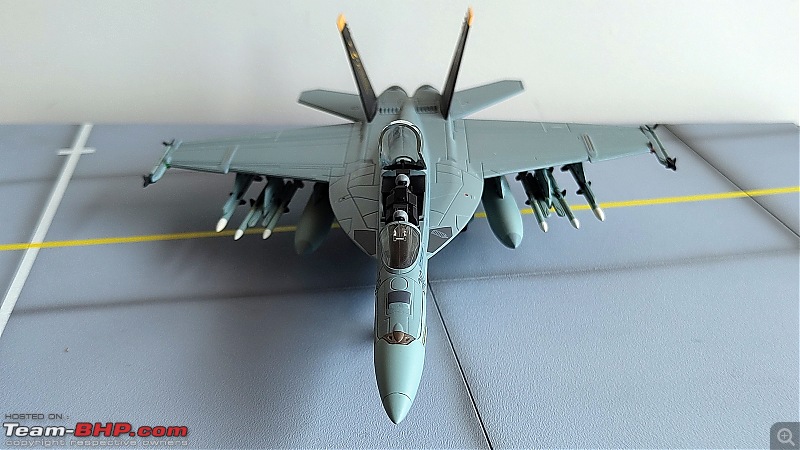

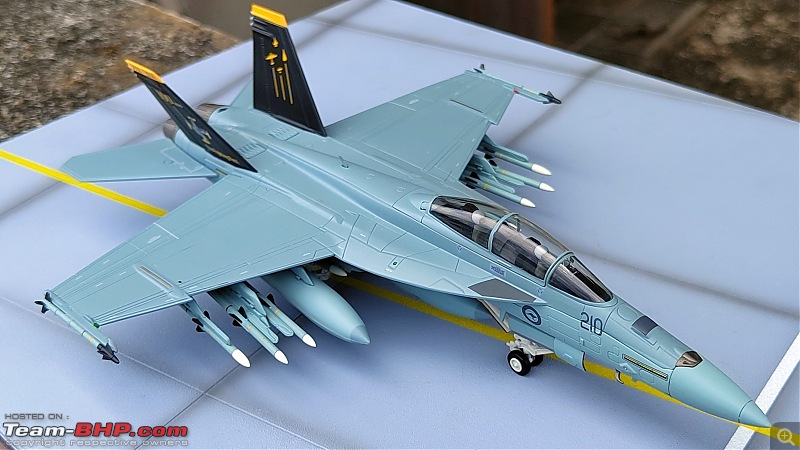

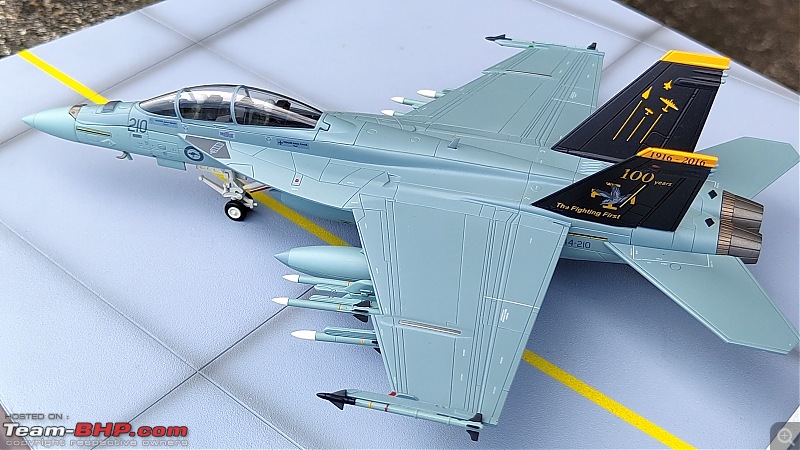


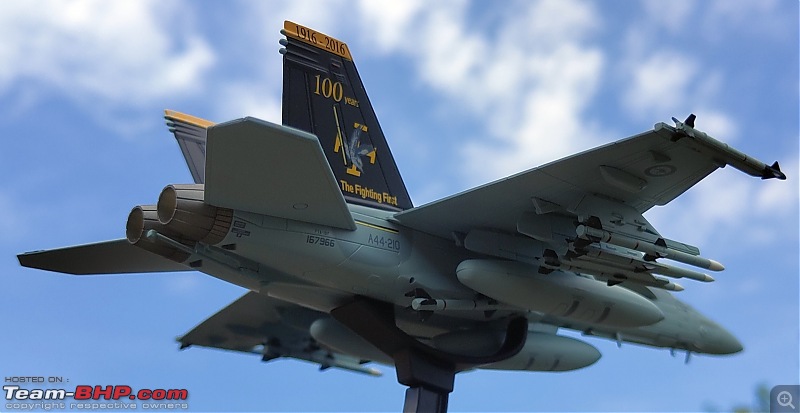


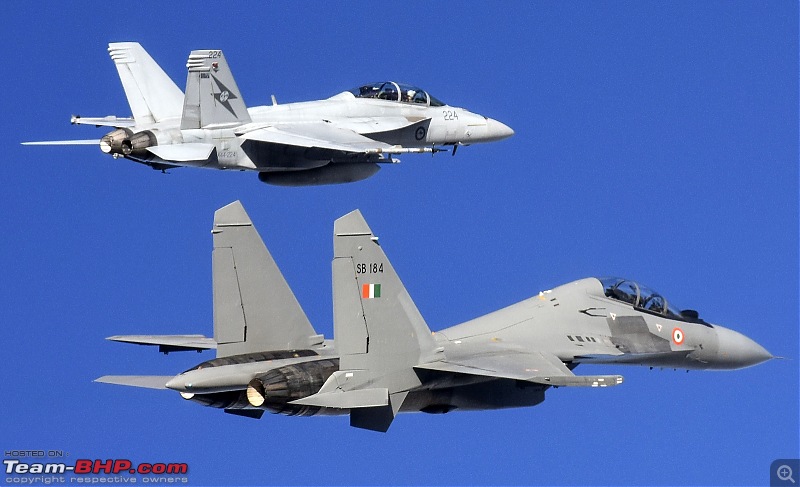

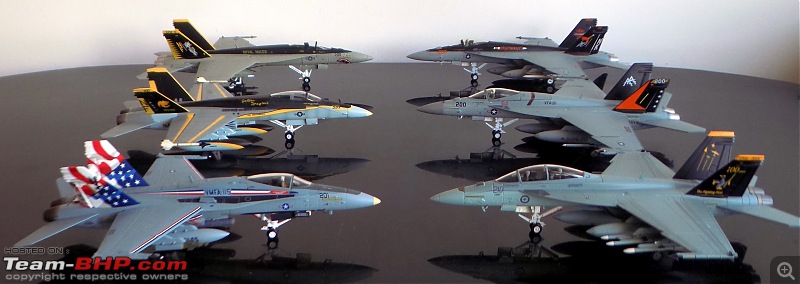
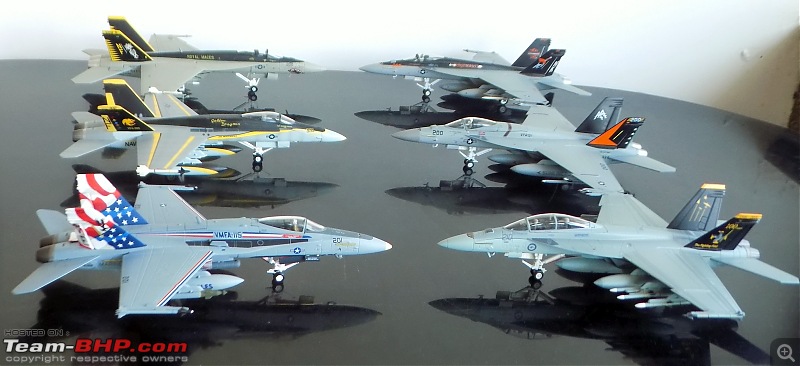
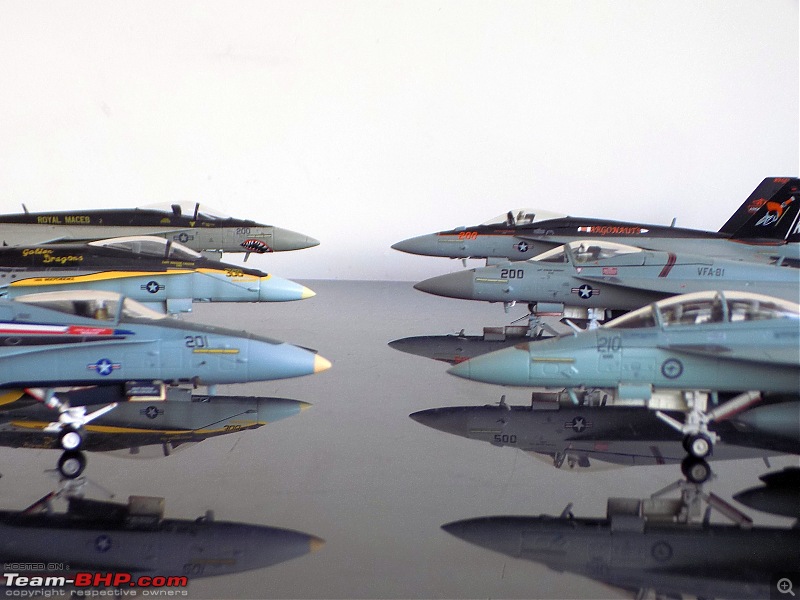

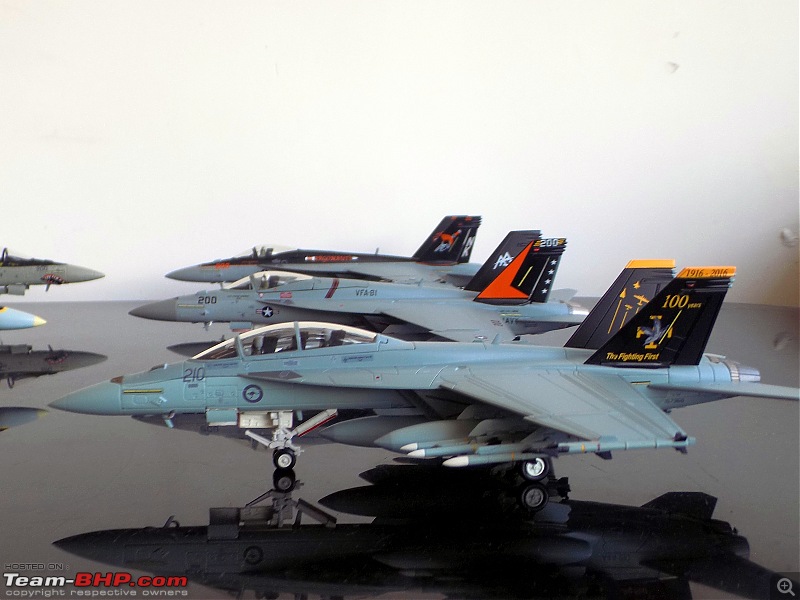
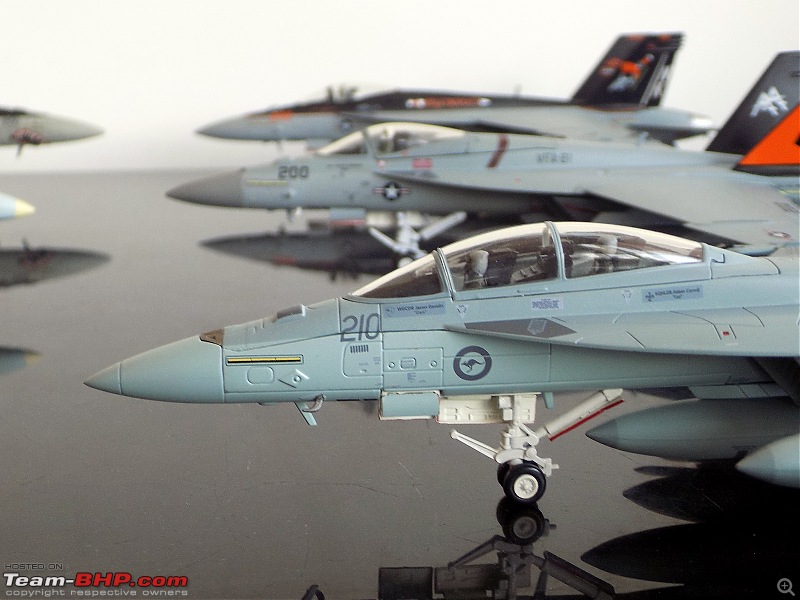
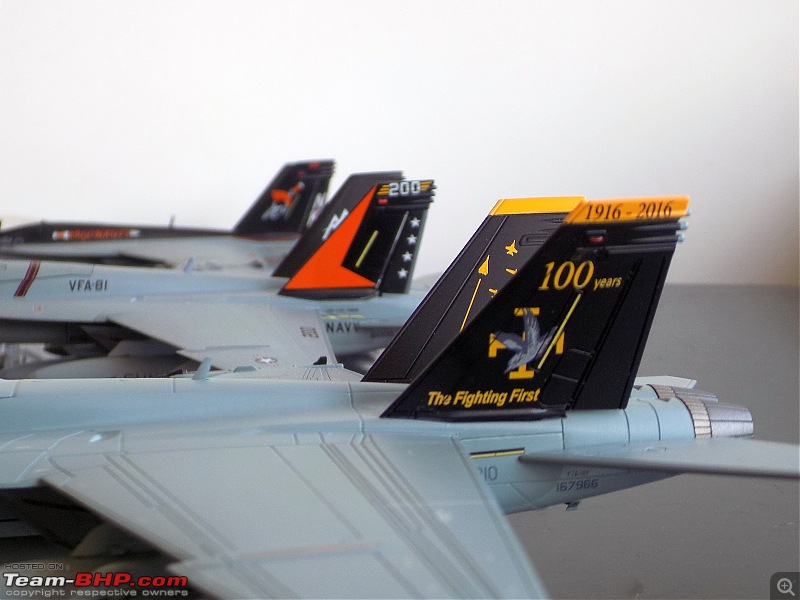
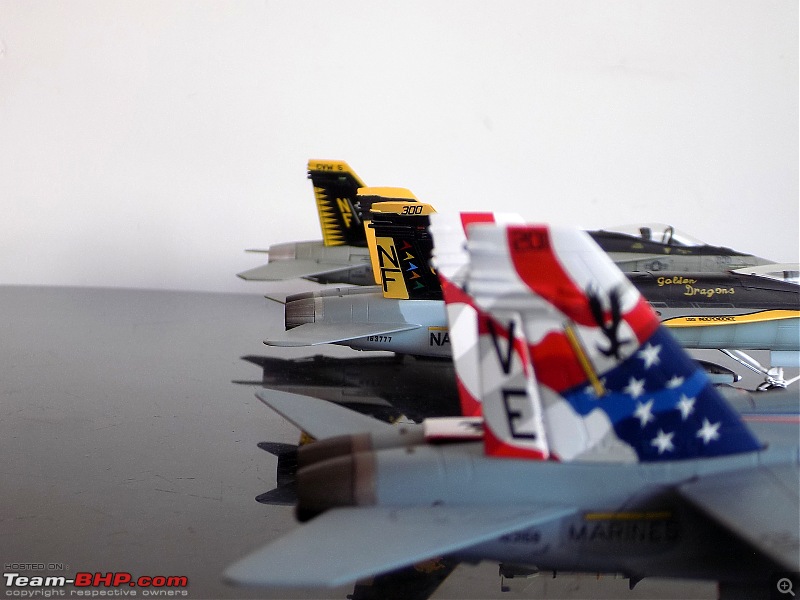
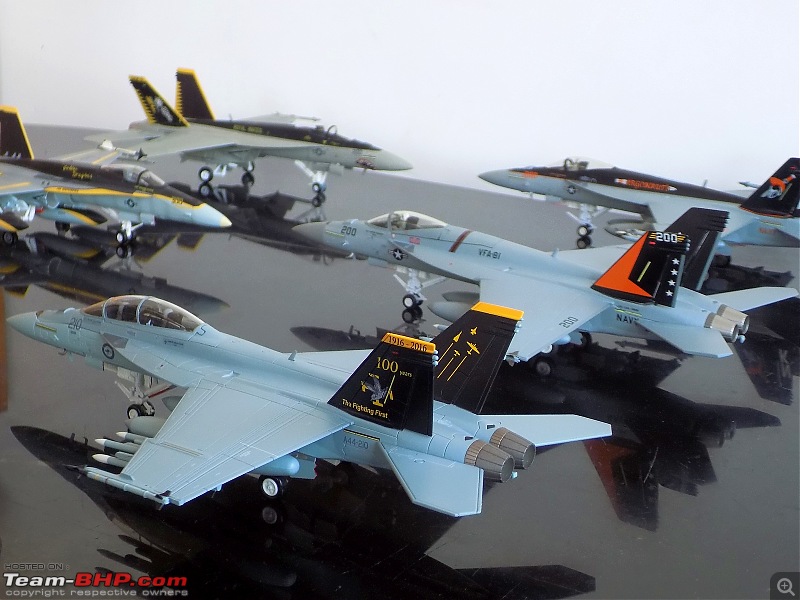
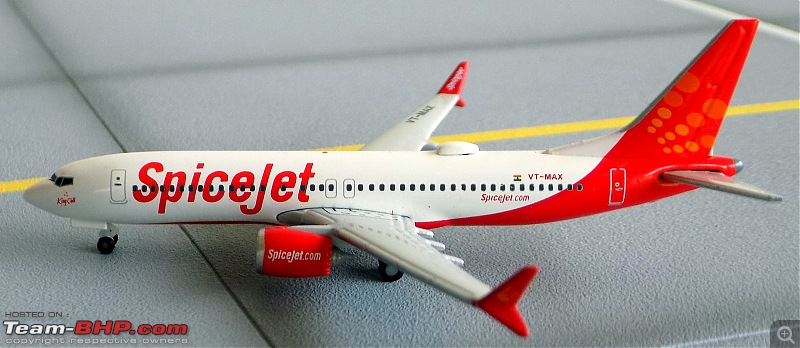


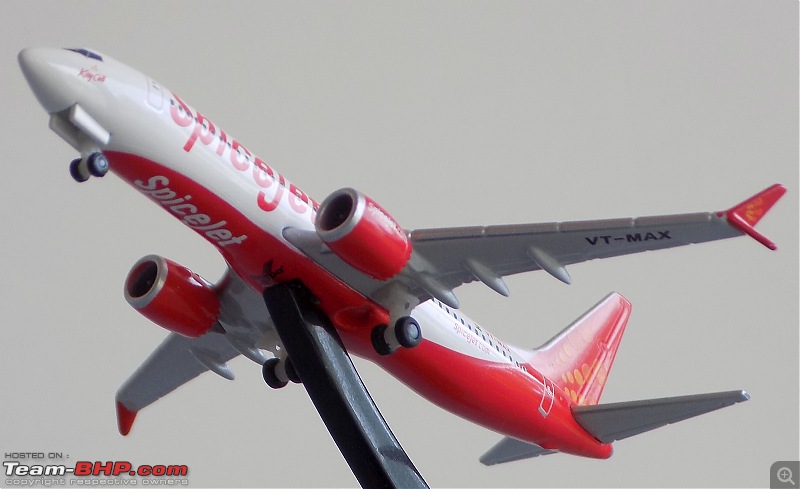
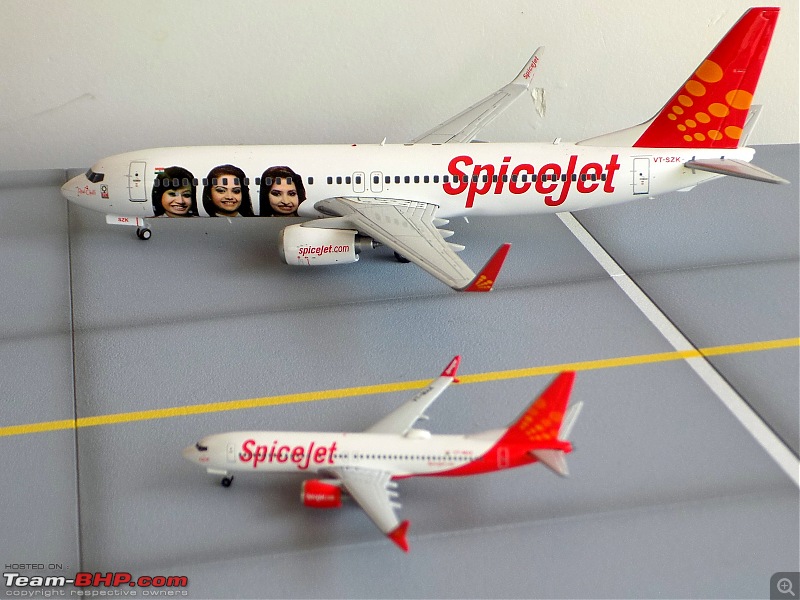

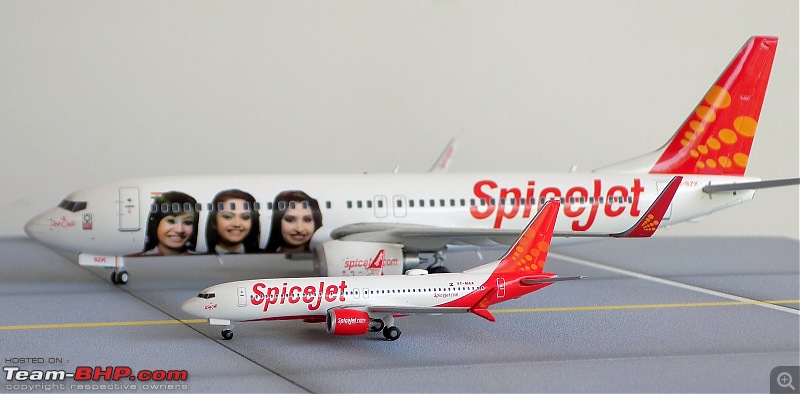

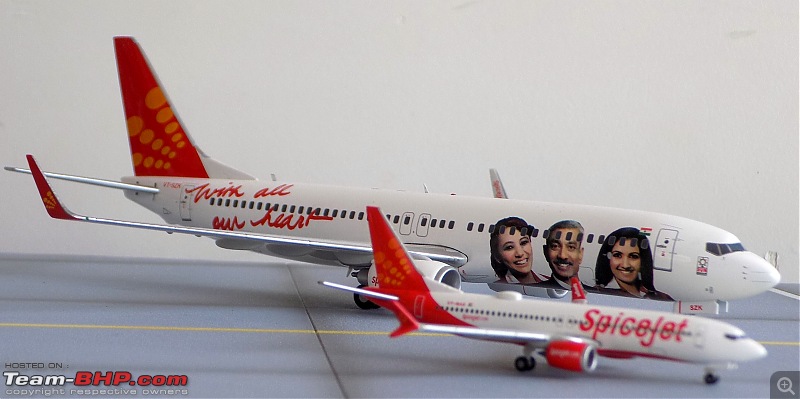
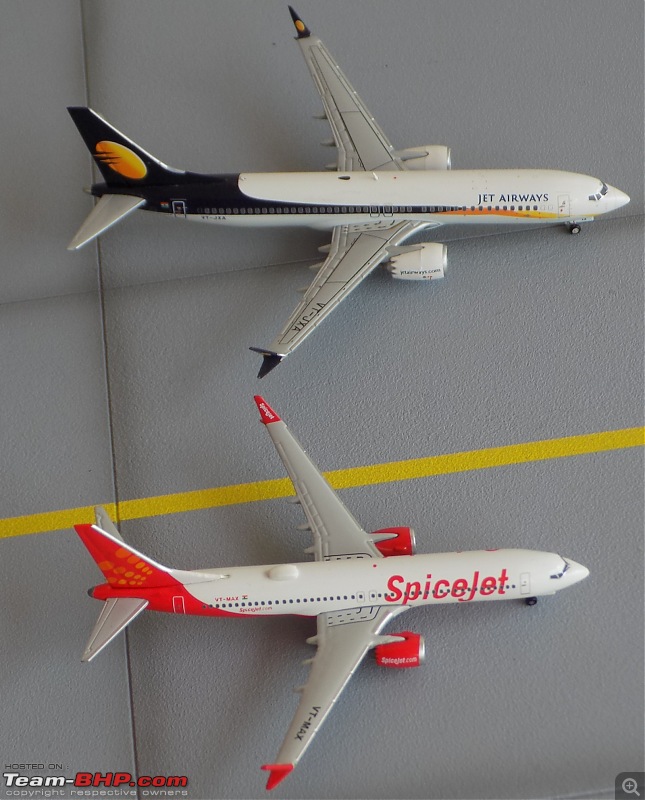

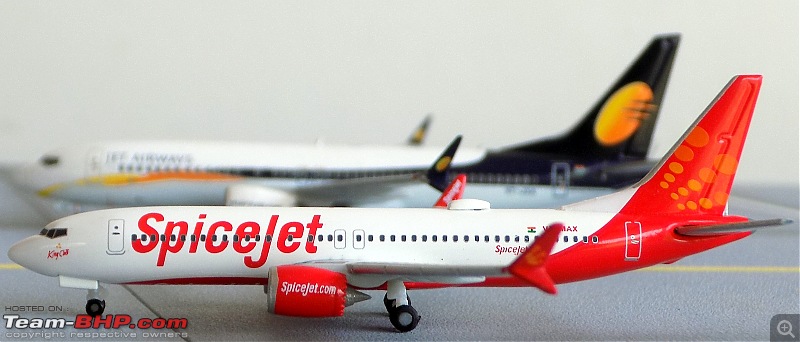
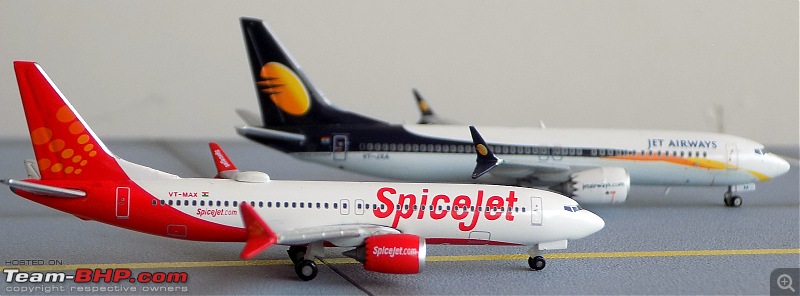
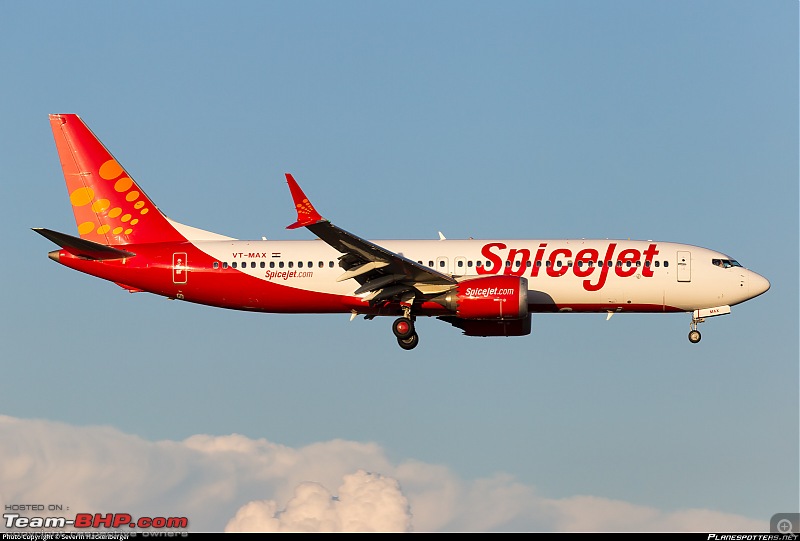
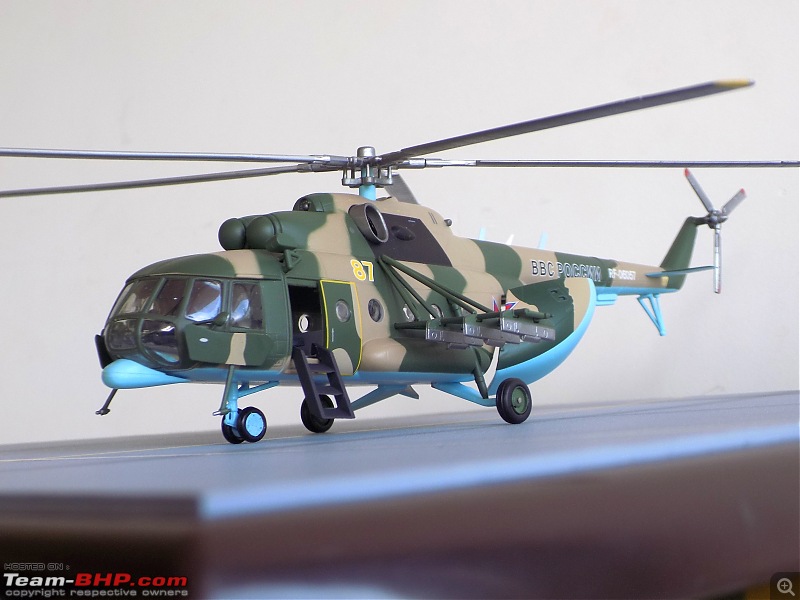
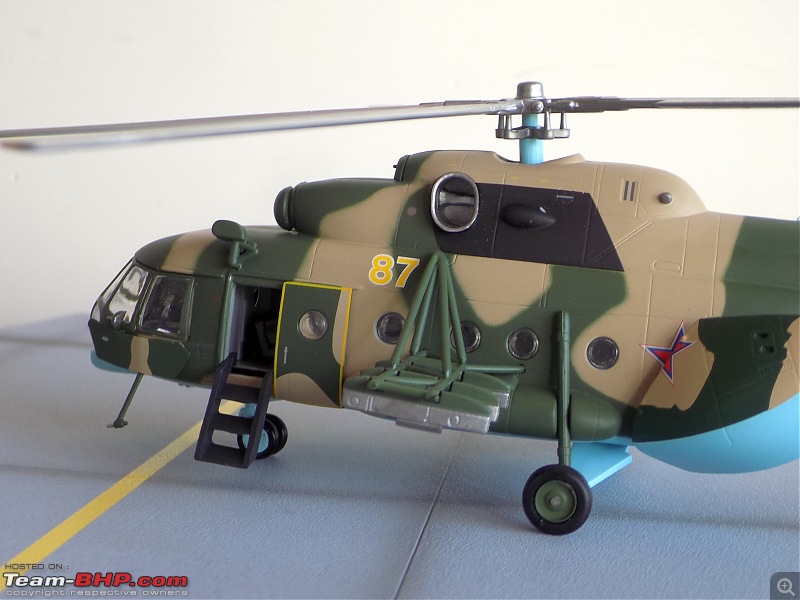
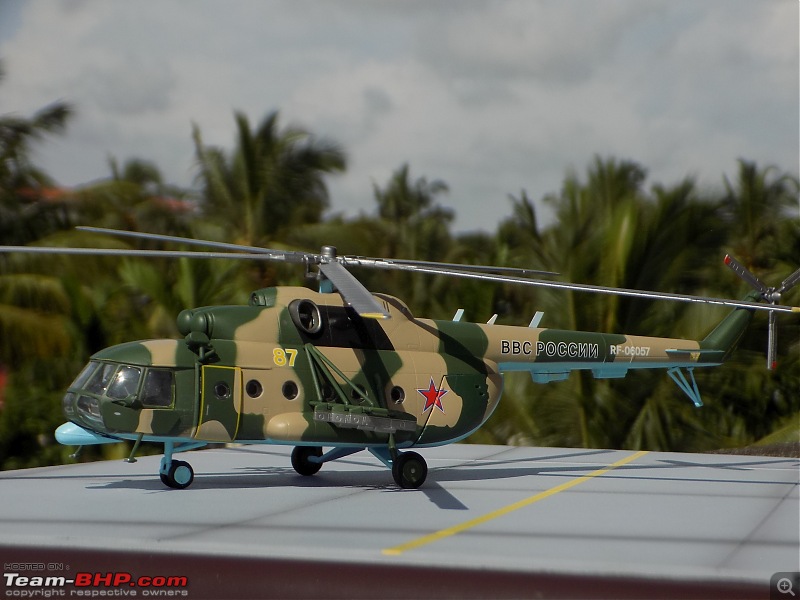
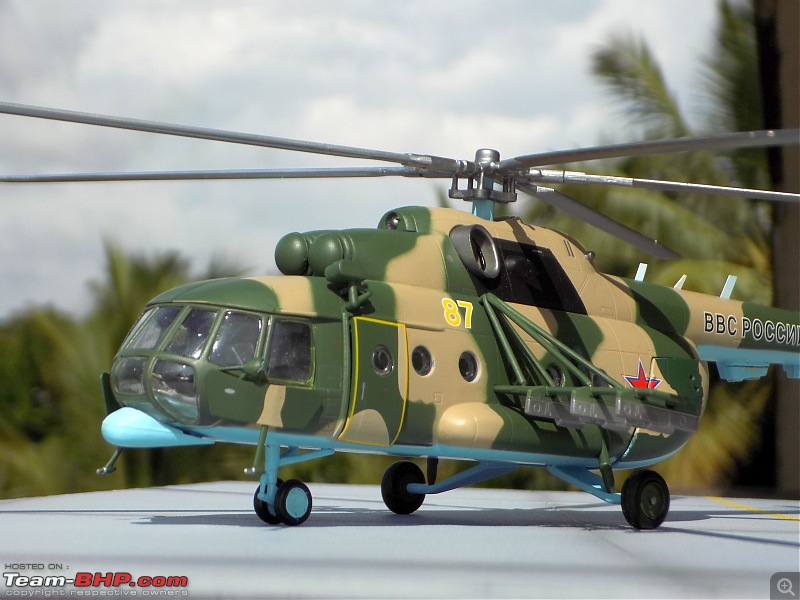
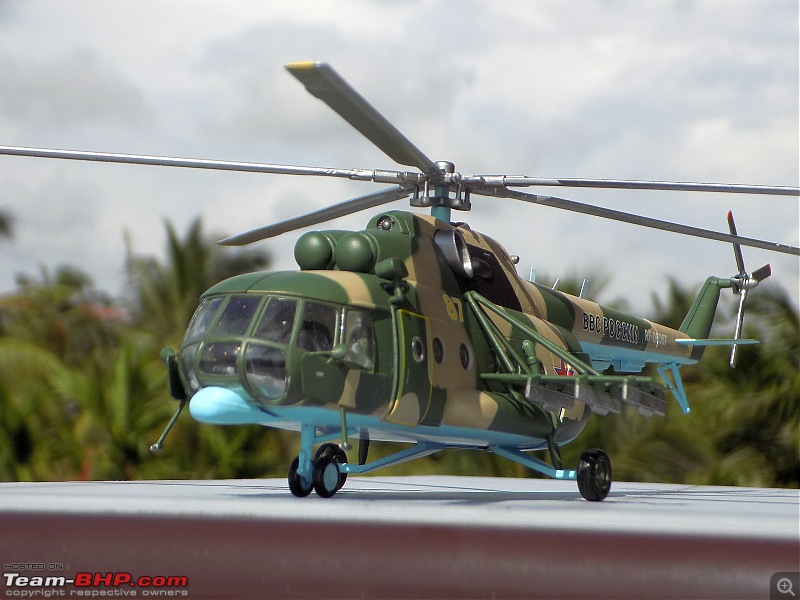
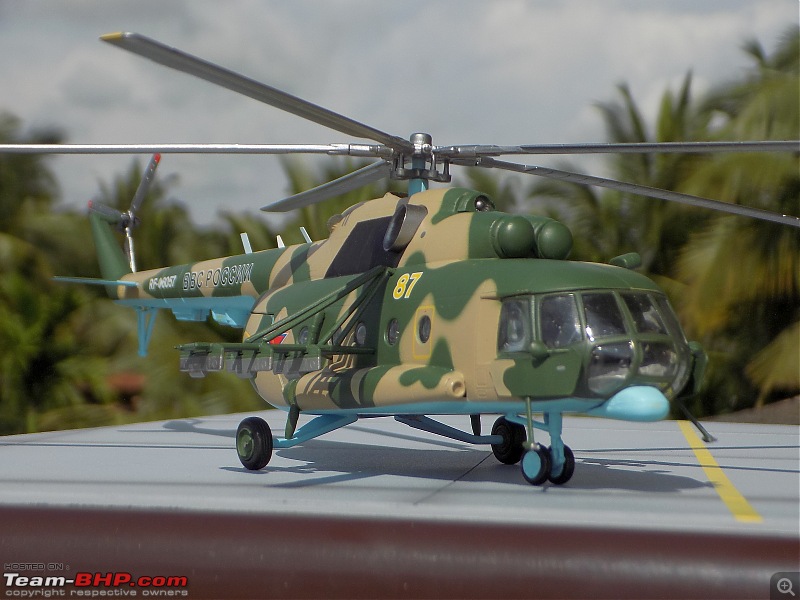
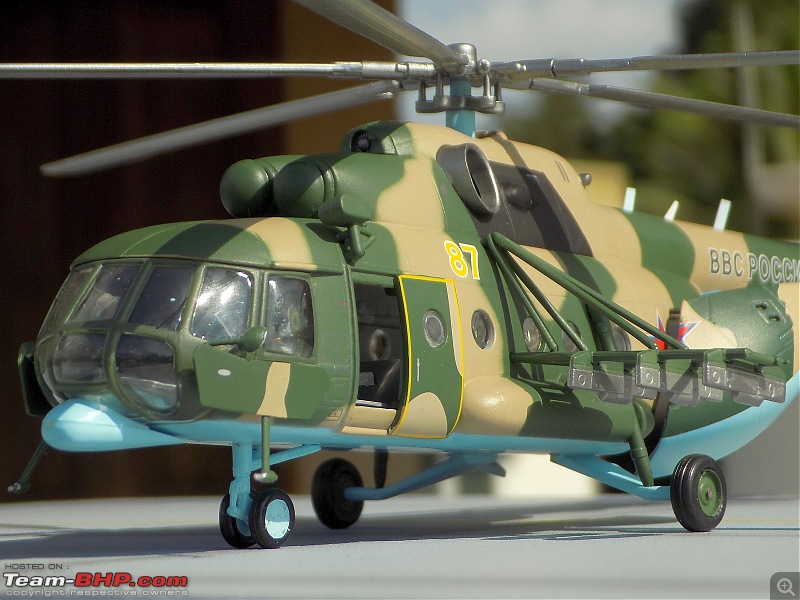


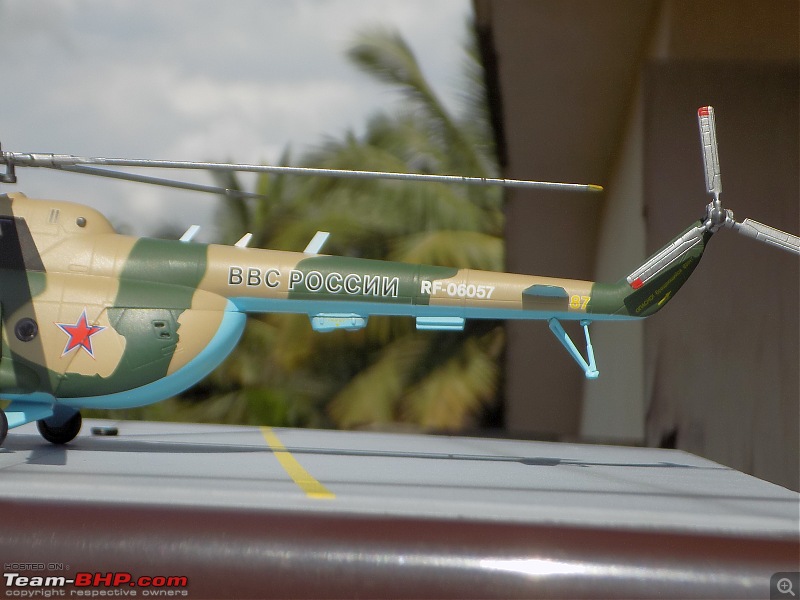

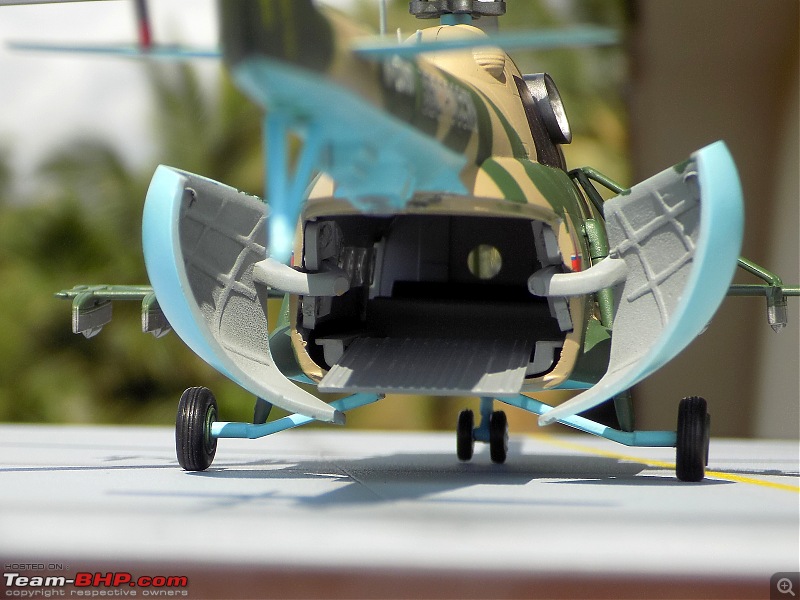

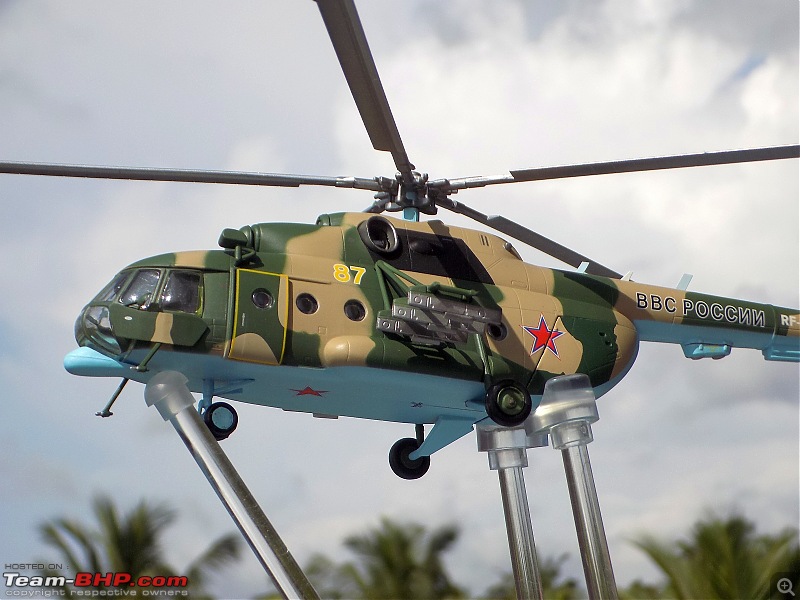
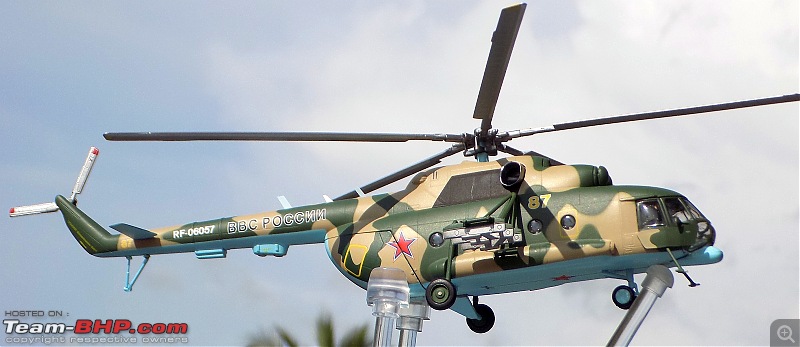

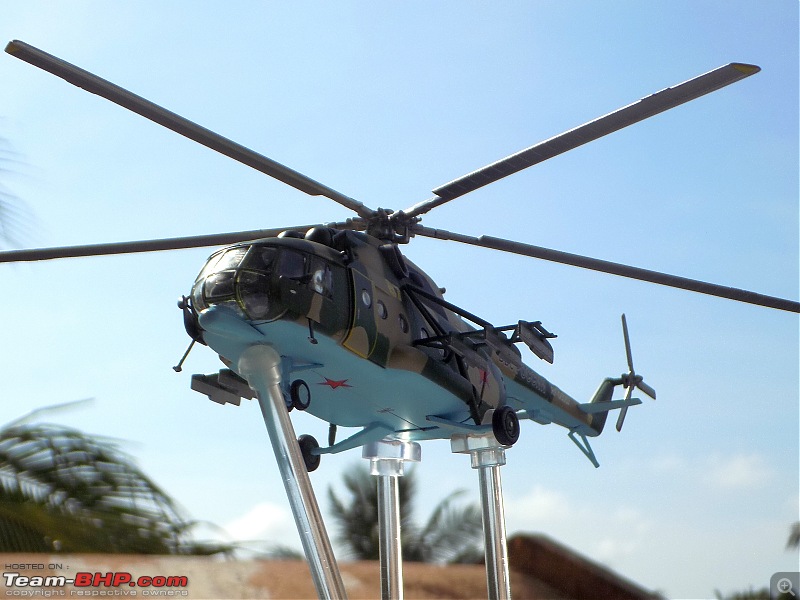
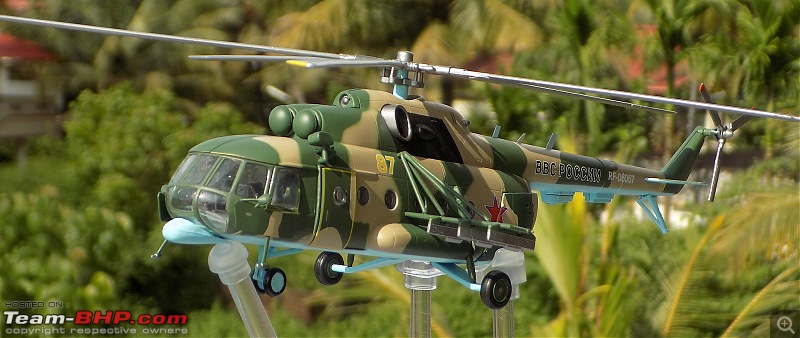

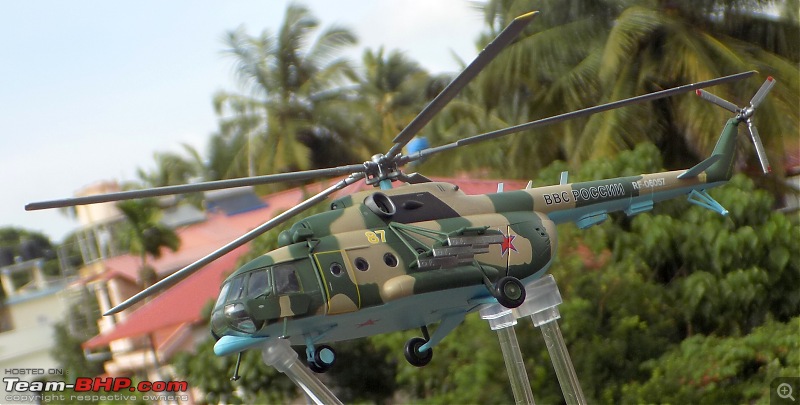

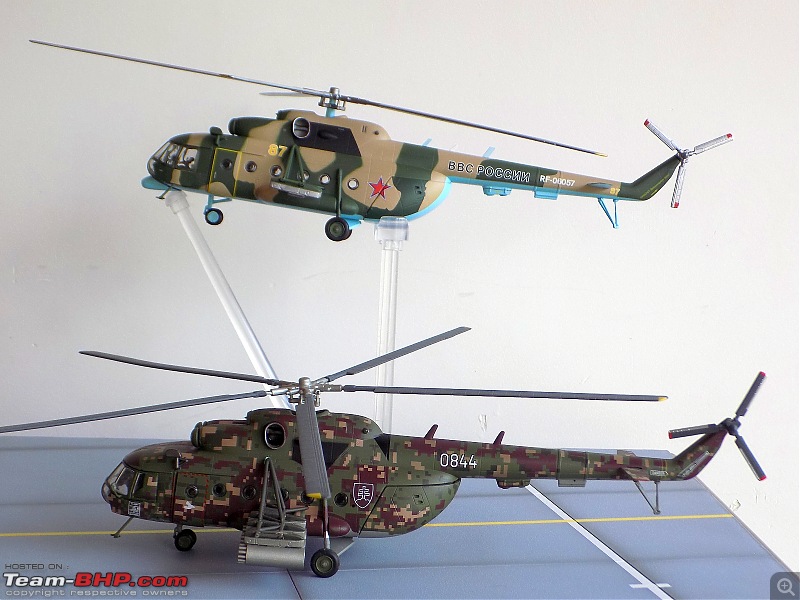
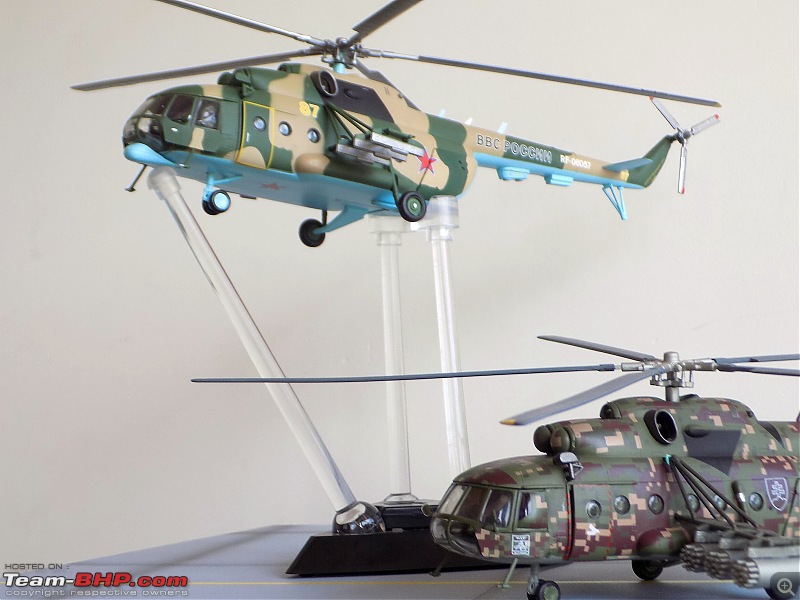


 Foxbat will be pleased. :-) Almost as detailed as the earlier HobbyMaster version {I think} you possess - both are enchanting actually.. An all time classic. The world's most produced helicopter at 17,000+ and counting. The only non-World War 2 aircraft with a higher production is the Antonov An-2 at 18,000 {which the Mi-17 still being in production will eventually surpass}, and a handful of small single piston engine powered primary trainers/general aviation machines such as Cessna 172. Outside WW2 this is the most produced multi-engine flying machine. What greater testimony to its reliability and versatility. I consider it an honour to have worked with the Mil Mi-17. When I first encountered the mil Mi-17 in course of my work its 'heavy duty' build caught my eye - very unlike helicopters and so Russian :-) The Mi-17/Mi-8 first flew as a prototype in 1961 i.e., 6 decades ago and still remains a leading medium-heavy transport chopper. Among major aircraft world over I think the Lockheed C-130 is the only aircraft still in production with a longer history. Congratulations on this eye-catching addition.
Foxbat will be pleased. :-) Almost as detailed as the earlier HobbyMaster version {I think} you possess - both are enchanting actually.. An all time classic. The world's most produced helicopter at 17,000+ and counting. The only non-World War 2 aircraft with a higher production is the Antonov An-2 at 18,000 {which the Mi-17 still being in production will eventually surpass}, and a handful of small single piston engine powered primary trainers/general aviation machines such as Cessna 172. Outside WW2 this is the most produced multi-engine flying machine. What greater testimony to its reliability and versatility. I consider it an honour to have worked with the Mil Mi-17. When I first encountered the mil Mi-17 in course of my work its 'heavy duty' build caught my eye - very unlike helicopters and so Russian :-) The Mi-17/Mi-8 first flew as a prototype in 1961 i.e., 6 decades ago and still remains a leading medium-heavy transport chopper. Among major aircraft world over I think the Lockheed C-130 is the only aircraft still in production with a longer history. Congratulations on this eye-catching addition.